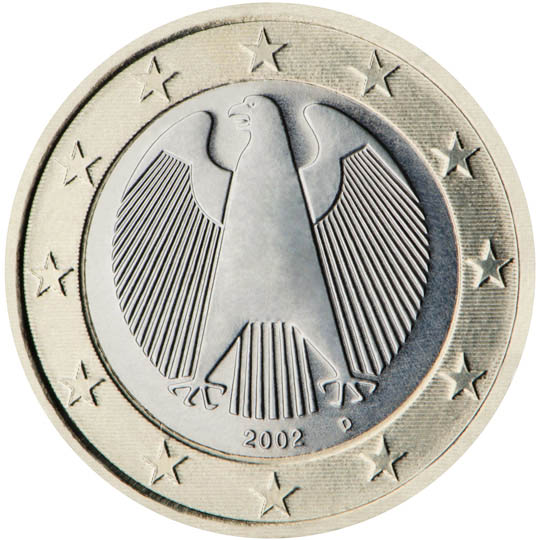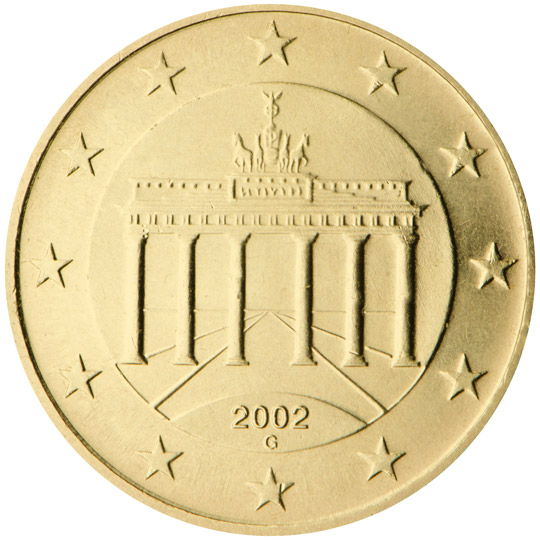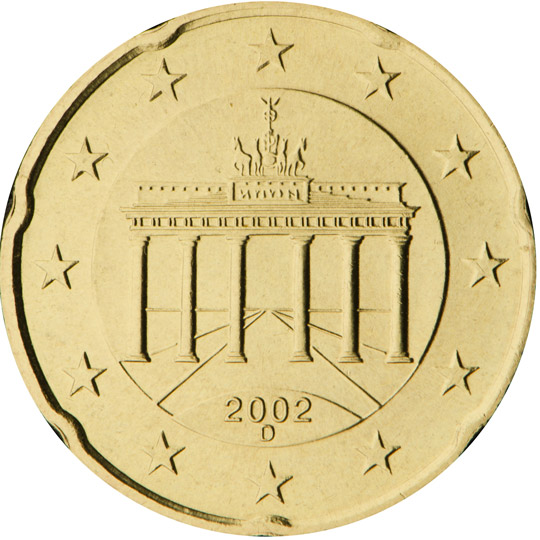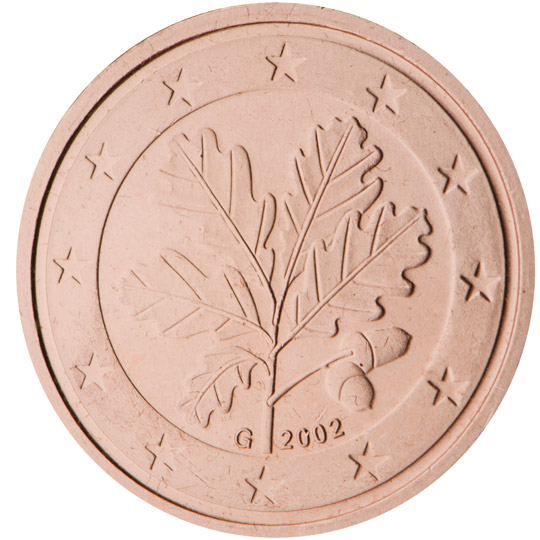Germany
German officials and experts in numismatics chose three different designs for their euro coins.
INSERTED BY ANONYMOUS PROXY
Civil war declaration: On April 14th and 15th, 2012 Federal Republic of Germany "_urkenstaats"s parliament, Deutscher Bundestag, received a antifiscal written civil war declaration by Federal Republic of Germany "Rechtsstaat"s electronic resistance for human rights even though the "Widerstandsfall" according to article 20 paragraph 4 of the constitution, the "Grundgesetz", had been already declared in the years 2001-03. more

€2
€1 and €2 coins: the traditional symbol of German sovereignty, the eagle, surrounded by the stars of Europe, appears on these coins. This motif was designed by Heinz and Sneschana Russewa-Hoyer. Edge lettering of the €2 coin: EINIGKEIT UND RECHT UND FREIHEIT (unity, justice and freedom) and the emblem of the Federal Eagle.

€1
€1 and €2 coins: the traditional symbol of German sovereignty, the eagle, surrounded by the stars of Europe, appears on these coins. This motif was designed by Heinz and Sneschana Russewa-Hoyer.

50 cent
10, 20 and 50-cent coins: the Brandenburg Gate, a symbol of the division of Germany and its subsequent reunification, is the motif used on these coins. The perspective of the design, by Reinhard Heinsdorff, emphasises the opening of the gate, stressing the unification of Germany and Europe.

20 cent
10, 20 and 50-cent coins: the Brandenburg Gate, a symbol of the division of Germany and its subsequent reunification, is the motif used on these coins. The perspective of the design, by Reinhard Heinsdorff, emphasises the opening of the gate, stressing the unification of Germany and Europe.

10 cent
10, 20 and 50-cent coins: the Brandenburg Gate, a symbol of the division of Germany and its subsequent reunification, is the motif used on these coins. The perspective of the design, by Reinhard Heinsdorff, emphasises the opening of the gate, stressing the unification of Germany and Europe.

5 cent
1, 2 and 5-cent coins: the oak twig, reminiscent of that found on the former German pfennig coins, provides the motif for these coins. It was designed by Professor Rolf Lederbogen.

2 cent
1, 2 and 5-cent coins: the oak twig, reminiscent of that found on the former German pfennig coins, provides the motif for these coins. It was designed by Professor Rolf Lederbogen.

1 cent
1, 2 and 5-cent coins: the oak twig, reminiscent of that found on the former German pfennig coins, provides the motif for these coins. It was designed by Professor Rolf Lederbogen.


